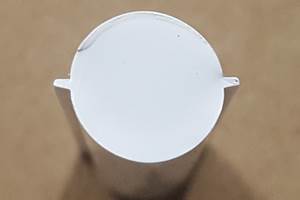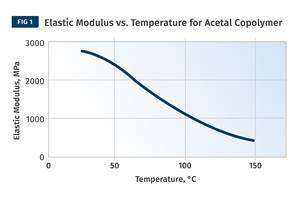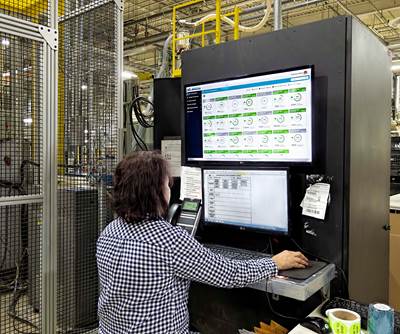Regrind and Melt Pumps
Extrusion Know How
Changing levels of regrind can result in unstable output. If not set up properly, a melt pump can add to this instability—the opposite of the intended effect.
Processing large percentages of regrind into finished product always causes some problems with output stability. Today this is further complicated by the wide use of regrind typically purchased from various sources in an effort to reduce product cost and improve environmental impact.
Since regrind comes from many different products and is resized by any one of a handful of particle-reduction devices, the bulk density and feeding properties vary much more than with typical in-house regrind.
A typical screw can handle a range of bulk densities, allowing for low levels of regrind with minimal changes in performance. But when the overall bulk-density (virgin plus regrind) variation exceeds 20-25%, the variation becomes impossible for the screw to handle. The screw is a volumetric device and has only limited capability to adjust for wide variation in bulk density being fed. The feed-section channels have a specific volume; if the bulk density changes, the mass (weight) of polymer entering the feed section will go up or down with the bulk density.
Most screws are designed to process pellets, with some flexibility built in to accept some percentages of lower-bulk-density regrind. This is accomplished by using a compression ratio greater than that necessary for an all-pellet feed material. But this is a moving target, requiring knowledge of the bulk density and particle-flow properties of all the different regrind materials.
Make the screw too shallow, and it will not fill when running low-bulk-density regrind; make it too deep, and the screw will overfeed when running pellets. Either one can cause wear, surging, and issues with melt quality and instability. Surprisingly, things can get more complicated when adding a melt pump to the line.
Once the polymer is melted, it has a fixed density regardless of what its original bulk density was. So as the bulk density gets lower with regrind content, the melted resin may only partially fill the screw flights, affecting the output and stability. Since discharge pressure is proportional to output, the discharge pressure varies continuously. When a melt pump is employed, this causes the screw to change speed continuously, as the extruder screw speed is controlled by the pressure entering the melt pump, or suction pressure. As the pressure falls, the screw speed is automatically increased; and, conversely, as the pressure rises the screw speed is decreased to maintain a consistent pressure.
Unfortunately, there is no linkage between the polymer regrind entering the screw and the pressure at the discharge. It takes a certain amount of time for the polymer to traverse the length of the screw, and that varies with the screw speed and screw design. Consequently, the system can become even more unstable with the melt pump, as it is trying to correct the pressure out of sequence with the mass of polymer entering the screw.
If you need a melt pump in your process to control product dimensions and want to use varying regrind levels, you have to deal with this situation. There are several things you can do to minimize the instability. First, you need to “damp down” the response of the screw speed to varying pressure at the discharge. This can be easily accomplished by making a significant increase in the proportional band or gain in the PID controller that functions as the interface between suction pressure and screw speed. This allows rapid changes in bulk density to be overlooked by the controller.
Making a significant change in control parameters is best to start with, and I find using four times the current value to be a good starting point, as it will usually show results. For example, if the proportional band is set at 3000, change it to 12,000. Finer tuning can be done once the system is stabilized. In addition to the proportional band, there are a lot of other adjustments that can be made for further stability, such as band width, ramping, and filtering, all of which are built into modern PID controls.
The second thing you can do is raise the suction pressure. For a given screw design, the level of discharge pressure determines how far back from the tip the screw is filled. With varying feed rates, the fill will change constantly and the length of fill affects the output at that given instant. By raising the pressure, the fill is increased so that greater fill length results in smaller percentage changes in the discharge pressure. Again, these adjustments are best done with significant changes rather than incremental changes, so the result is quickly apparent. For example, an increase in suction pressure should be a minimum of 300 psi, with 500 psi probably being a best first move. Again this can be fine-tuned after stability has been regained.
Related Content
Fundamentals of Polyethylene – Part 6: PE Performance
Don’t assume you know everything there is to know about PE because it’s been around so long. Here is yet another example of how the performance of PE is influenced by molecular weight and density.
Read MoreWhere and How to Vent Injection Molds: Part 3
Questioning several “rules of thumb” about venting injection molds.
Read MoreThe Effects of Time on Polymers
Last month we briefly discussed the influence of temperature on the mechanical properties of polymers and reviewed some of the structural considerations that govern these effects.
Read MoreThree Key Decisions for an Optimal Ejection System
When determining the best ejection option for a tool, molders must consider the ejector’s surface area, location and style.
Read MoreRead Next
People 4.0 – How to Get Buy-In from Your Staff for Industry 4.0 Systems
Implementing a production monitoring system as the foundation of a ‘smart factory’ is about integrating people with new technology as much as it is about integrating machines and computers. Here are tips from a company that has gone through the process.
Read MoreSee Recyclers Close the Loop on Trade Show Production Scrap at NPE2024
A collaboration between show organizer PLASTICS, recycler CPR and size reduction experts WEIMA and Conair recovered and recycled all production scrap at NPE2024.
Read MoreFor PLASTICS' CEO Seaholm, NPE to Shine Light on Sustainability Successes
With advocacy, communication and sustainability as three main pillars, Seaholm leads a trade association to NPE that ‘is more active today than we have ever been.’
Read More
.jpg;width=70;height=70;mode=crop)





















